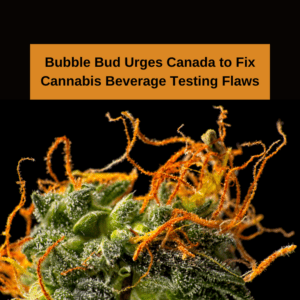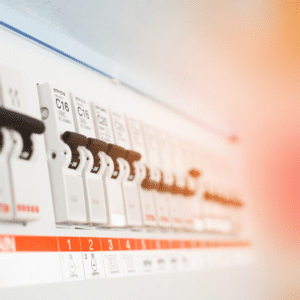Monitoring the Evolving Business Landscape of Weed


The Massachusetts Cannabis Control Commission (CCC) recently shared that the state collected $1.8 billion in cannabis sales during 2023. This figure reflects a combined total of recreational cannabis sales ($1.56 billion) and medical cannabis sales ($225 million). That’s a significant increase from 2022, which totaled $1.49 billion ($1.42 billion for adult-use sales and $260.2 million for medical cannabis sales).
“This continued growth confirms that Massachusetts’ regulated marijuana industry is still a maturing market,” CCC acting chair Ava Concepcion said in a press release. “As more retailers and delivery licensees come online, flower prices start to stabilize, and the stigma surrounding cannabis slowly dissipates—legal, tested products are becoming more accessible, affordable, and approachable than ever before, and that’s reflected in the multiple sales records licensees broke in 2023.”
Sales from December 2023 showed the highest amount of sales collected for a single month at $140.1 million, surpassing the previously highest month for sales since August 2023. Over time, the cost of cannabis flower has greatly decreased, with the CCC recording the price of an average ounce at $14.13 in December 2020 that dropped to $5.66 per ounce as of December 2023.
Milestone Statistics
In year-to-date milestone statistics for Massachusetts’s adult-use cannabis industry, which began in December 2018, it collected $1 billion in sales in October 2020, $2 billion in August 2021, $3 billion in April 2022, $4 billion in December 2022, and $5 billion in August 2023.
Michigan’s Cannabis Industry Growth
Since Michigan launched adult-use sales in December 2019, the state has become one of the fastest-growing cannabis industries. Following the release of December 2023 sales data, the Michigan Cannabis Regulatory Agency (CRA) shared that the state collected a total of $3.06 billion in combined adult-use and medical cannabis sales in 2023, a major increase from the $2.3 billion collected in 2022.
CRA executive director Brian Hanna attributed the continued success of Michigan’s adult-use cannabis industry to factors including cannabis tourism. “We are a state that has an adult-use program surrounded by states that don’t,” Hanna told WGVU Public Media.
Job Growth and Industry Support
Sales aren’t the only increase seen in the Michigan cannabis industry. Hanna told Crain’s Detroit that there has been an increase in job opportunities as well. “As we head into 2024, the CRA continues to focus on transparency and communication, working with stakeholders as the industry continues to grow,” said Hanna. “We’re committed to supporting Michigan’s cannabis licensees who currently employ over 35,000 employees, a 23% increase from December 2022.”
Oklahoma’s Decline in Cannabis Licenses
Data published by the Oklahoma Medical Marijuana Authority (OMMA) on Feb. 1 in its monthly licensing report shows a continued decrease in overall active cannabis business licenses and patient numbers. In February 2023, the state had 11,974 active cannabis business licenses, which decreased to 8,025 licenses by February 2024. This total includes 4,347 cultivator licenses, 2,293 dispensary licenses, 1,248 processor licenses, 98 transportation licenses, and 26 lab testing licenses.
Oklahoma voters rejected adult-use legalization in March 2023, and medical cannabis patient numbers are also dropping. In February 2023, Oklahoma had 369,468 active medical cannabis patient cardholders, which decreased to 345,308 by February 2024.
Moratorium on New Licenses
In response to significant oversaturation in the cannabis industry, Oklahoma Gov. Kevin Stitt signed House Bill 3208 in May 2022 to implement a moratorium on cannabis business licenses. The ban, extended in May 2023, is set to last until at least August 2026. However, according to an OMMA-commissioned report published in June 2023, Oklahoma still had 32 times more cannabis than necessary to meet the demand of approximately 355,000 medical cannabis patients.
Canadian Cannabis Pricing Parity
Both legal and illegal Canadian cannabis prices are nearly the same, according to a recent data revelation. Deloitte and Neobi recently published a report entitled “Clearing the Smoke—Insights into Canada’s Illicit Cannabis Market.” The report evaluated 624 legal and 57 illegal online stores in Canada between May and June 2023, revealing that illegal flower was only 20% cheaper than legal flower. The average price from illegal cannabis was $6.24 per gram, compared to $7.96 per gram for flower in legal stores.
“The gap in prices has considerably narrowed since the last pricing comparison performed by Statistics Canada in Q4-2019, when illicit flower products were priced 55% lower,” the report explained.
Inventory and Product Differences
The report also found differences in stock keeping unit (SKU) counts between legal and illegal stores. Legal stores had fewer SKUs (538) compared to illegal websites (918). Legal storefront inventory included 25.6% flower, 25% pre-rolls, 16.1% edibles, 13.1% extracts, 11.1% vapes, 6.6% beverages, 2.2% topicals, and 0.3% seeds. Illegal store inventory, however, included 36.9% flower, 2.6% pre-rolls, 15% edibles, 32.7% extracts, 4.3% vapes, 0.5% beverages, 0.9% topicals, and 7.1% other psychedelics.
As the cannabis business landscape continues to evolve, these trends reflect significant shifts in sales, regulations, and market dynamics across different regions.











